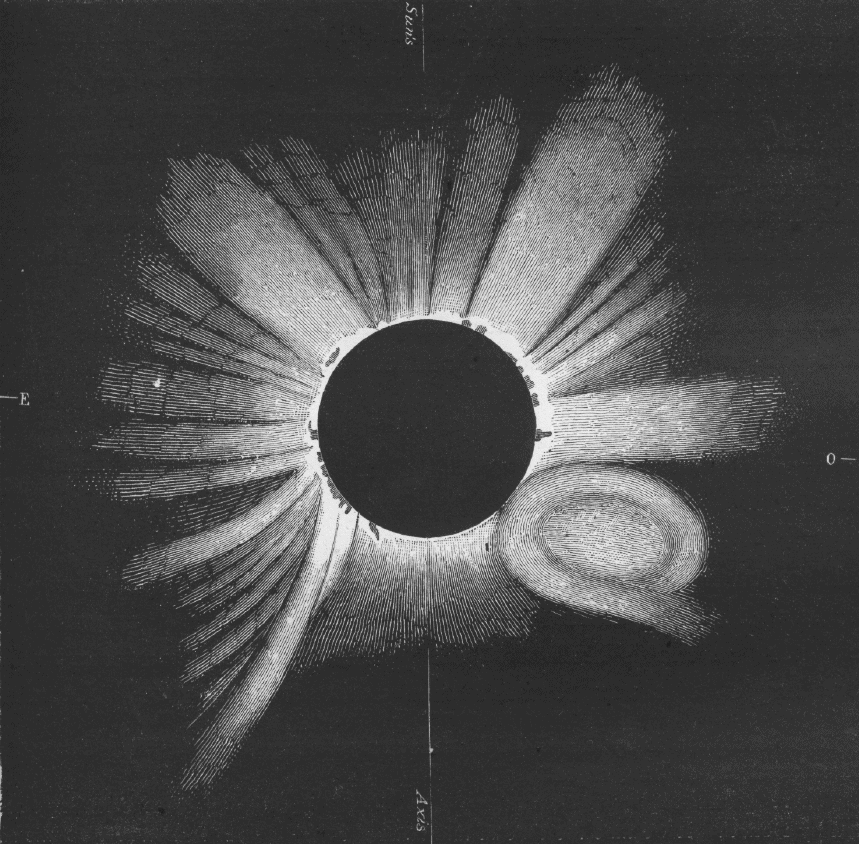
Between the years of 1971 and 1973, the first CME–coronal mass ejection–was visualized with the help of satellite imagery. Upon ejection, these eruptions at the surface of the sun send magnetically drenched clouds of solar material hurtling throughout our solar system at speeds of up to 1 million miles per hour. Visualizing a CME is not easy; the eruptions are very faint so a chronograph fixed to the OSO 7 satelitte was required to block out the sun with a small disk, leaving the wisping, curling trails of the sun’s corona exposed to observation. However…there is another, more fortuitous and affordable way to view a CME.
Wait for a solar eclipse.
July 17th, 1860, over a hundred years before satellite images of the CME, the pathway of a solar eclipse traced its way through the top of North America, across the Atlantic over Spain and finally finishing its path in North Africa. Scientists of this era did not have the luxury of space shuttles nor very accurate astronomical photography so instead, as the moon gradually obscured the sun from view and left its shadow, they watched patiently, took out their pens and drew what they saw.
Across the globe, a number of scientists all positioned at different locations along the path of the eclipse produced drawings that had a common feature: a wisp of the corona seemed to gradually grow out and spiral away from the sun in about four or five separate drawings. Not only did this feature exist across these drawings, but it also appeared to evolve over time. In hindsight, it was concluded that this was most likely the first recorded observation of a CME.
Fortunately, we have a solar eclipse coming across America very very soon so if you see pictures or see it yourself. Keep an eye out for those CME’s. They’re literally rocking our world.